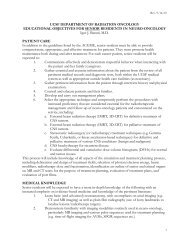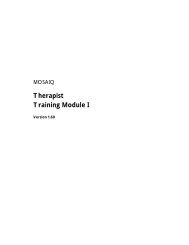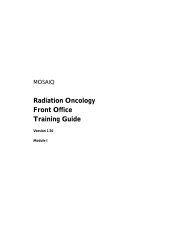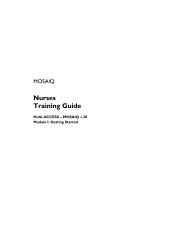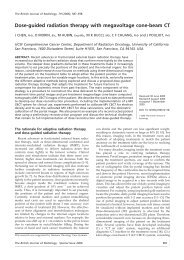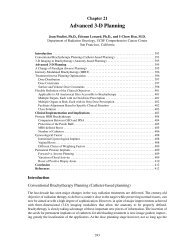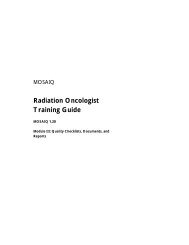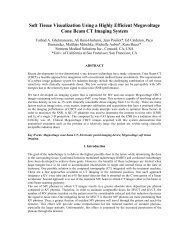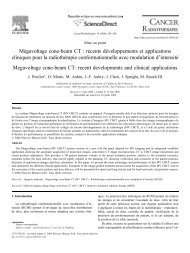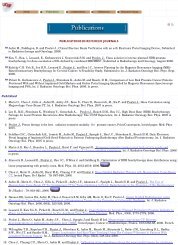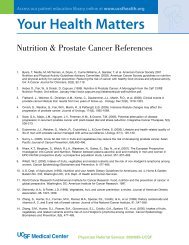Dosimetrist/Physicist Training Guide - UCSF Radiation Oncology
Dosimetrist/Physicist Training Guide - UCSF Radiation Oncology
Dosimetrist/Physicist Training Guide - UCSF Radiation Oncology
You also want an ePaper? Increase the reach of your titles
YUMPU automatically turns print PDFs into web optimized ePapers that Google loves.
Appendix A: Getting Your System Started<br />
Copyright 2009, IMPAC Medical Systems 97<br />
LTGRAD0005C/1.0/31-Mar-2009<br />
Notes<br />
Figure 82: Dose and Fraction Review Window with Inaccuracies<br />
Option 2: Add a Prescription with Phases,<br />
Manually Record Treatments, then Treat<br />
Remaining Fields from the System<br />
Patient Setup<br />
Identifies a mismatch. Displays inaccurate data.<br />
Identifies an excess treatment delivered.<br />
Consider the patient information below as a typical example for Option 2:<br />
• The physician prescribes 4500cGy at 180 per day.<br />
• Before you changed to MOSAIQ, the patient received 4140 cGy at 180 per day<br />
(23 fractions). The radiation oncologist creates a prescription that documents the<br />
dose delivered to date (4140 cGy) as 1 fraction.<br />
• The clinician manually records the treatment for the dose delivered to date (4140<br />
cGy) and adds the start date and the correct total MU per field.<br />
• The clinician then appends the prescription to show the remaining<br />
dose/treatments in a second fractionation phase that includes a total prescribed<br />
dose of 360 cGy, a fractional dose of 180, and a Daily fractionation pattern.<br />
• The clinician uses the Treatment Chart/Calendar to schedule and treat the<br />
remaining dose.




